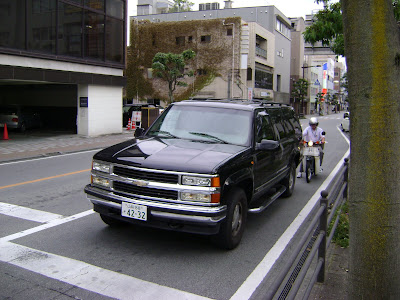Picture of the Month
 The gateway to the world-famous Takeda Shrine in Kofu, designated by the Japanese government as one of the 489 most important cultural shrines in all of Japan. Japanese people of all ages come here to take pictures and buy good luck charms to help them pass college entrance exams.
The gateway to the world-famous Takeda Shrine in Kofu, designated by the Japanese government as one of the 489 most important cultural shrines in all of Japan. Japanese people of all ages come here to take pictures and buy good luck charms to help them pass college entrance exams.Greetings and Salutations, loyal followers! It is I, your ever-adventuring guide to adventurous adventures, Captain Zooey Dedalus. It is my goal to present Japanese cultural explorations that highlight the most fascinating aspects of their culture, and I hope to singlehandedly bridge that ever-widening gap between East and West through open communication and a minimum of childish name-calling. As we all know, the true calling of any social scientist is to experience as much adventure as possible no matter what the cost, and your humble narrator is no exception. In this blog I shall analyze the varied aspects of Japanese culture ranging from tea ceremony to tentacle porn for the good of all humanity and with no expectation of personal gain.

But first, I must draw your attention to this cultural anomaly I witnessed just the other day at Yamako supermarket. Though this may appear to be a typical shelf of
natto and other bean products, the trained eye of the cultural anthropologist will surely notice that something is amiss. Some careless shopper, having changed his or her mind about his or her shopping itinerary, has lazily deposited a four-pack of medium eggs on this shelf instead of returning them to their proper location. And why is this act, so common in American supermarkets, so important, my devoted readers may ask? Because Japanese people will always, without exception, return an item to its original spot on the shelf after changing their minds, always. (This just happens to be the one exception.)

Last month I took a trip to Tochigi and Ibaraki prefectures, in a region of Japan occasionally referred to by locals as the Kanto (I am not sure of the meaning of this word, but according to my Japanese dictionary, it may be derived from the word
kantoku, or film director). Above you can see a cultural snippet of Japan from Oyama city in Tochigi, where electricity races down the wires faster than attractive girls fleeing a cosplay convention. Tochigi is famous for its
gyoza, a small dumpling-type food that was probably brought over from China a long time ago (like most things in Japan that aren’t anime or co-prosperity spheres). We sampled
gyoza with mushrooms (
kinoko), shrimp (
ebi) and cheese (
chizu), among others. They were all really good, though I couldn’t really tell the difference between them.
In my travels, I also encountered one the most important hallmarks of Japanese culture, a phenomenon that has had more impact than flower arrangement, calligraphy,
ukiyoe,
kabuki, and J-Pop music combined. I’m talking about Love Hotels.

Love Hotels, quite simply, are small hotels catering to clandestine romantic
rendez-vous (
rendez-vous is a French word meaning meeting or appointment) and providing the ultimate in both secrecy and idyllic ambience. Access to the Hotel Crossway in Mito (which looked innocuous enough except for the neon sign outlining a stiletto heel) is obtained via an underground parking garage or through a cleverly hidden entrance at street level. In the interest of privacy, customers select their room by studying photographs on a large board, then buying the appropriate key from a vending machine. The gray décor spotted with more neon images of stiletto heels combined with the lack of human contact combined to unnerve your normally fearless narrator. Without buying a key, we managed to gain access to an upper floor where I snapped the above picture of a vending machine selling various marital aids. My companion and I then beat a hasty retreat when we spied an elderly Japanese gentleman vacuuming the hallway.
------------------------------------------------------------------------------------------------------------
That is all for now, loyal readers! I assure you that in this blog, I will continue to bring you authoritative reporting on the cultural and anthropological aspects of Japan and the rest of the world. I am devoted to experiencing the whims of adventure regardless of the perils of my financial situation, and am determined to keep going with only my wits to guide me; though of course its also helpful to have my 15.1 megapixel camera, a sturdy leather backpack, my iPod, laptop, adequate changes of clothes, a Blackberry, a nice fine-tip pen, some books to read in case I get bored, Nalgene bottle, Western deodorant, handkerchief, a nice cell phone, my lucky socks, a Japanese phrasebook, an extra watch, that cool Lawson’s button I found, some Alfort, extra batteries, emergency Ranch dressing, and my little stuffed manatee that spins around in a circle when you pull the string and let it go.
Stay tuned for more adventures!
Captain Zooey Dedalus
The Author would like to note that his name has been compiled from several obscure literary sources and intends no infringement therein. The author would like to thank everyone involved with the creation, production, and management of this blog, but he really can’t because he did it all himself. All material in this blog has been the result of painstaking research, and the appropriate Wikipedia articles have been cited when appropriate.Current Mood: Adventurous!Current Music: Theme from Neon Genesis Evangelion






















